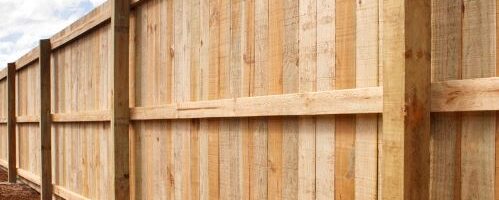
How often should I repaint or reseal my timber fence?
Auckland Timber Fence Maintenance: A Comprehensive Guide
Understanding Fence Life Expectancy
Timber fences are known for their classic appearance and ability to blend seamlessly into most landscapes. However, like any other outdoor structure, they are subject to wear and tear. On average, with proper maintenance, a timber fence can last anywhere from 15 to 20 years. But how often should you repaint or reseal it to maintain its longevity and beauty?
Repainting and Resealing Intervals
Repainting: A freshly painted timber fence can lose its lustre over time due to weather conditions. Generally, repaint your fence every 2-5 years. But if you notice any peeling, cracking, or fading earlier, it might be time for a touch-up.
Resealing: Sealing a wooden fence acts as a protective layer, shielding the wood from moisture, pests, and UV rays. Reseal every 2-4 years, or when you see signs of wood discolouration or dryness.
Factors Affecting Fence Maintenance
Several factors can influence how often you’ll need to repaint or reseal:
Weather: Auckland’s varying weather conditions, including rainfall and UV exposure, can degrade the timber faster.
Wood type: Different timber types, like pine or cedar, have varying resistance levels to decay and pests.
Initial treatment: Quality of the primary paint or sealant job plays a role. A well-applied coat will protect the timber longer.
Auckland Council Bylaws Impacting Costs
Certain bylaws govern the installation and modification of fences. Some specific Auckland suburbs and regional councils, including North Shore, Waitākere, and Manukau, have their unique codes and guidelines. These bylaws may dictate:
- Maximum fence heights
- Boundary placements
- Materials allowed
Always consult with your local council before starting any fencing project to avoid unexpected costs or complications.
NZ WorkSafe Health and Safety Requirements
Health and safety standards might also influence your decision. For example, if your timber fence is adjacent to a pool, NZ WorkSafe regulations may require specific pool fence heights and designs to prevent accidents. These requirements can affect your material and labour costs.
Alternative Auckland Fence Products
Consider these alternative fencing materials available in Auckland:
- Vinyl fencing: Low maintenance and durable but can be more expensive than timber.
- Aluminium fencing: Rust-resistant and lightweight. Offers a modern look, generally more costly than wood but requires less upkeep.
- Composite fencing: A blend of wood and plastic, offering durability with the appearance of wood. Initial costs are higher, but maintenance is minimal.
Fence Cost Comparison
To help with your decision, here’s a summary comparison:
| Fence Material | Initial Installation Cost (per metre) | Maintenance Cost (5-year estimate) |
| Timber | $110-$264 | $250-$500 |
| Vinyl | $132-$330 | $220-$440 |
| Aluminium | $154-$352 | $110-$330 |
| Composite | $176-$396 | $110-$220 |
Remember, prices can vary based on local suppliers, specific design preferences, and unforeseen site conditions. Always obtain several quotes and check reviews before selecting a contractor or material.
In Conclusion
Making an informed decision involves understanding your fencing material options, the associated costs, and the maintenance required. With this guide, Aucklanders can make a choice that aligns with their budget, aesthetic preferences, and long-term plans.
Timber Fence FAQs in Auckland
How long does a typical timber fence last in Auckland?
With proper maintenance, a timber fence can last between 15 to 20 years in Auckland’s varying weather conditions.
Why does my timber fence need repainting or resealing?
Repainting and resealing protect the wood from moisture, pests, UV rays, and weather-related wear and tear, ensuring its longevity and beauty.
How often should I check my fence for signs of wear?
It’s a good practice to inspect your fence at least once a year or after severe weather conditions.
Are there specific paints or sealants recommended for timber fences?
Yes, use exterior-grade paints and sealants designed for timber. Always consult the product label or a professional for recommendations.
What’s the difference between repainting and resealing?
Repainting enhances the visual appeal and provides some protection. Resealing primarily offers a protective layer against external elements.
How do Auckland Council bylaws affect my fence installation?
Bylaws can dictate aspects like maximum fence heights, boundary placements, and allowable materials. Always consult local council guidelines.
Why are health and safety standards important for fencing?
NZ WorkSafe regulations ensure that fences, especially around areas like pools, meet specific safety standards to prevent accidents.
Can I install a fence myself or should I hire a professional?
While DIY fence installation is possible, hiring a professional ensures adherence to local guidelines and ensures the fence’s durability and appearance.
What impacts the cost of fence installation the most?
Materials chosen, fence height, design complexity, and labour are primary cost determinants.
How do I choose the right timber for my fence?
Consider factors like durability, resistance to decay and pests, and desired appearance. Common choices include pine and cedar.
Are there eco-friendly fence options available in Auckland?
Yes, materials like composite (a blend of wood and plastic) offer an eco-friendlier alternative to traditional timber.
How does vinyl compare to timber in terms of cost and maintenance?
Vinyl is generally more expensive initially but requires less maintenance over time compared to timber.
Can I change the height or design of my fence after installation?
Yes, but modifications might require approval from the local council and adherence to bylaws and safety regulations.
Are there any recommended fence builders in Auckland?
Numerous reputable fence builders operate in Auckland. It’s essential to check reviews, obtain multiple quotes, and consult references before making a decision.


